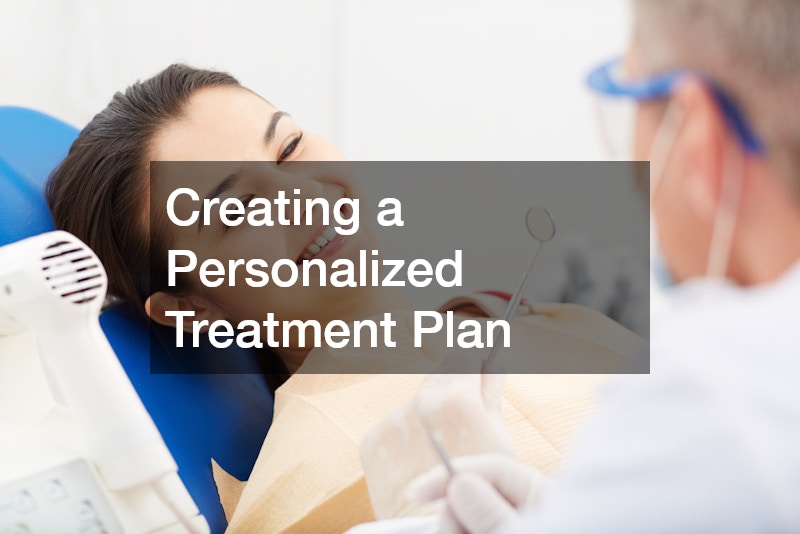Regular visits to your local dentist are crucial for maintaining optimal oral health. They help in early detection of potential issues, which can save you from more complicated and costly treatments down the line. As a first-time visitor, you’re embarking on a proactive journey to preserve your smile and well-being.
Preparing for Your First Dental Appointment
Gathering Dental and Medical History
Preparation starts with collecting your medical and dental history, which provides the dentist with an essential baseline. This information helps in identifying potential risk factors and tailoring advice to suit your unique needs. It’s imperative to gather any relevant information that might impact your dental care plan.
Your dental history can highlight recurring issues, while your medical history ensures the dentist considers any medications or conditions. This comprehensive approach helps the dentist understand your overall health, as the mouth is closely linked to many systemic conditions. Preparing this information beforehand saves time and facilitates a smoother consultation process.
Often, patients overlook the role their non-dental health plays in oral wellness. Conditions like diabetes or heart disease can influence dental treatments. Hence, providing thorough and accurate history is a collaborative step towards effective oral health management.
What to Bring to the Appointment
Arriving prepared ensures your first visit proceeds without a hitch. Essential items include photographic identification, which verifies your identity and establishes rapport. Insurance documentation is also vital for clarifying coverage and understanding any costs involved.
Bringing previous dental records offers insights into your history of treatments and conditions. This can prevent unnecessary repetition of procedures or misdiagnoses. Additionally, having a list of current medications alerts the dentist to potential interactions or contraindications with oral treatments.
Having all necessary documents at hand allows you to focus on the appointment rather than administrative concerns. This foresight reflects your commitment to starting on the right foot and empowers you with the confidence to address any questions with your dentist. Ultimately, it fosters a smoother, more efficient interaction from the outset.
What to Expect During the Dental Exam
Initial Consultation and Examination
Upon arrival, a warm greeting from the dental staff sets a positive tone for your visit. Your initial consultation involves a detailed review of your dental history and a discussion about any current concerns. The dentist will conduct a thorough examination, assessing the health of your teeth, gums, and overall oral conditions.
This phase will often include a visual inspection and may also involve the use of a small mirror to observe hard-to-see areas. During this time, your dentist is looking for signs of decay, gum disease, or any other abnormalities. The exchange provides an opportunity to discuss your oral hygiene practices and receive personalized advice.
It’s natural to feel a bit of apprehension about this first examination, but remember that it lays the groundwork for proactive care. Being transparent about any discomfort or symptoms helps the dentist tailor their advice. Ultimately, this initial examination is an interactive start to building a trusting healthcare relationship.
X-rays and Dental Imaging
X-rays or other dental imaging are critical components of comprehensive oral examinations. They enable your dentist to see beneath the surface, identifying issues that aren’t visible to the naked eye. Through such imaging, dentists can assess bone health, detect cavities, and evaluate the roots and surrounding bones.
While some patients may be concerned about exposure to X-rays, modern technology minimizes radiation and ensures safety. Discuss any concerns with the dental staff before the procedure to ensure comfort and understanding. This technology complements the physical examination, offering a complete picture of your oral health.
Receiving X-ray results allows for transparent communication of findings and potential concerns. With this visual support, your dentist can clearly explain their observations, fostering a better comprehension of any needed treatments. Consider this collaborative imaging process an investment in preventative care and your ongoing oral wellness.
Understanding the Results and Treatment Plan
Discussing Findings with Your Dentist
Post-examination discussions are an opportunity to delve into the specifics of your oral health. Your dentist will present the findings in an accessible and understandable manner. This clarity allows you to comprehend the current state of your oral health and the implications of any issues identified.
Engage actively in this discussion by asking questions and voicing any concerns. This dialogue is crucial for ensuring you leave with a clear idea of your current oral health status. Additionally, understanding the why behind each observation enhances your engagement with recommended treatments.
Creating a Personalized Treatment Plan
Your dentist will take the findings and formulate a tailored treatment or preventive care plan. This plan will address current issues and establish goals for maintaining optimal oral health. Personalized recommendations might include regular cleanings, specific oral hygiene practices, or treatments for any identified conditions.
This personalized plan respects your unique health history, lifestyle, and goals. The collaborative approach ensures that your treatment plan feels manageable and actionable. Your dentist’s detailed, customized efforts lay the groundwork for achieving and maintaining a healthy smile.
The importance of regular dental visits cannot be overstated. They play a critical role in safeguarding your oral and overall health, providing both preventive care and early detection of potential issues. By following the outlined steps for your first dental visit, you’re setting the stage for a committed, collaborative relationship with your dentist.



